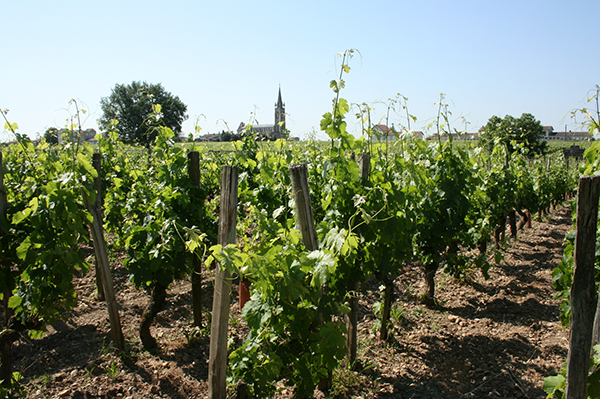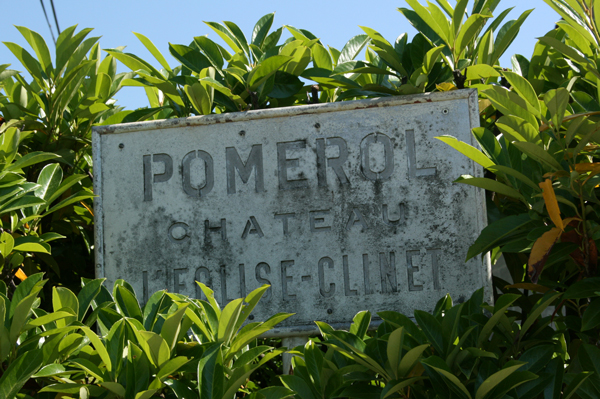Jefford on Monday
I pushed the bell. Nothing happened. I waited. A little later I tried again. Still nothing. I looked at the scruffy, sunlit garden. Then Denis Durantou came skipping around the side of the house from somewhere at the back, smiling, impish as ever, full of speed and surprise, just as I remembered him.
I hadn’t seen him for some years. I was grey-haired; he was almost white. We used to taste together with the Farr Vintners team and Bordeaux veteran Barry Phillips, touring the left bank at en primeur time during the later 1990s. I remembering him introducing himself to some of the grand left-bank proprietors; you could see by their blank looks that they had no idea who he was. I recalled, too, the freshness and drama of young Eglise Clinets like 1998 and 2000, served in dripping glasses perched on barrels in the equipment-strewn little cellar. Those wines are now worth double the price of many left-bank second growths from the same vintages. Maybe now the Médocains recognise his name.

I was back this June with some American and Asian students. Denis quickly rounded us into his simple white tasting room, hung with his wife Marie Reignac’s paintings, for a look at 12 wines: Eglise Clinet in 2010 and 2012, plus the same vintages of his other wines: Petite Eglise (not a second wine, but his Pomerol from sandy parcels rather than the gravelly clays used for Eglise Clinet); Saintayme (a pure-Merlot St Emilion from St Etienne de Lisse, close to Castillon); Ch Montlandrie in Côtes de Castillon itself (75 per cent Merlot and 20 per cent Cabernet Franc, but where Denis is growing and propagating Cabernet Sauvignon); and two Lalande de Pomerols, Les Cruzelles (an 11-ha property, Merlot-dominated, where Denis is propagating Cabernet Franc) and La Chenade (a similar blend from the gravel soils of Les Cruzelles).
Saintayme was better in 2010 (fresh plum: rich and vivid) than in 2012 (peppery and cool). Montlandrie was the other way around: here it was the 2012 which most impressed (plump, sensual, spicy). I adore Durantou’s two Lalande de Pomerols, and they were terrific in both vintages but especially 2012: suddenly you can see that milky grace, that hedonistic charm, that beguiling softness which is one key to Pomerol’s appeal, and which you always hope you’ll find on the other side of the Barbanne. La Chenade is prettier and more chiffon-wrapped to start with, but marginally less deep when you tape-measure the fruit; both, anyway, are outstanding value and the kind of wines it would be hard not to gobble up as soon as the delivery person handed over the case. (Remind yourself what a wonderful grape variety Merlot is as you do the gobbling). Petite Eglise brings an extra classiness and refinement, and the 2010 proved how this wine can truly reward keeping: there is unfolding structure and power here, despite the wine’s poise.
What makes Eglise Clinet special? I mentioned the ‘milky grace’ and ‘beguiling softness’ of Pomerol just now, but you’d have to wait a very long time indeed before Eglise Clinet would fit that bill; remember that these are Merlots of more clay than gravel. And Denis Durantou is a classicist, a disciplinarian, a pragmatist, and possibly (around harvest time) a martinet: old vines and low yields but no late-harvest decadence, without a lot of extractive hanky-panky or forest sweetening. These are alert, sappy, almost shocking Pomerols in youth: brightly beautiful. I preferred the 2010 because its tannins were more resonant and gratifying, because of its sweetness without sucrosity, because of its plenty depths, all of which suggests it will burrow through the years tirelessly; but the 2012 is not far adrift: fresh, grippy, full of spicy resource.

Denis spoke directly about the en primeur process. ‘I produce wine every year and I want zero stock, otherwise I can’t finance other projects.’ He says he doesn’t decide his own en primeur price – he just talks to a few négociants he trusts, and accepts the price they suggest. ‘With the négociants, we dance the tango,’ he said, grabbing me for a few coercive dance moves, to general merriment. ‘What about organics?’ someone asked. ‘I just want to produce wine every year,’ he replied. So no organics here, though he’s very careful” about what does go on the vines. The style? ‘I try to paint with nuances of astringency. We need astringency. You forget the sweet food.’
This visit to Eglise Clinet came shortly after I’d written a column (for the August edition of Decanter magazine) in which I called for Bordeaux to become ‘dirtier, truer, more human, more direct, more shocking, more real’, in order to give drinkers ‘reasons to believe in it, not reasons to be cynical about it.’ Durantou, it struck me, was the perfect example of what Bordeaux should be: unpretentious, unvarnished and unfettered, offering a range which provides great value even to those (like me) who couldn’t think about buying the top wine. He was a winegrower in the classic sense, from pruning through to bottling. I suppose he must own a suit, but I’ve never seen him in one.
It would be hard, of course, to run a 90-ha property like Denis Durantou runs Eglise Clinet; scale imposes delegation and the separation of tasks. There must surely be some way to tweak the stuffy Bordeaux model, though; to have a bit more fun and informality; to change the message and re-draw all the visuals; to lift the shutters, and let a little more human sunlight in.
Translated by Sylvia Wu / 吴嘉溦
All rights reserved by Future plc. No part of this publication may be reproduced, distributed or transmitted in any form or by any means without the prior written permission of Decanter.
Only Official Media Partners (see About us) of DecanterChina.com may republish part of the content from the site without prior permission under strict Terms & Conditions. Contact china@decanter.com to learn about how to become an Official Media Partner of DecanterChina.com.


Comments
Submit